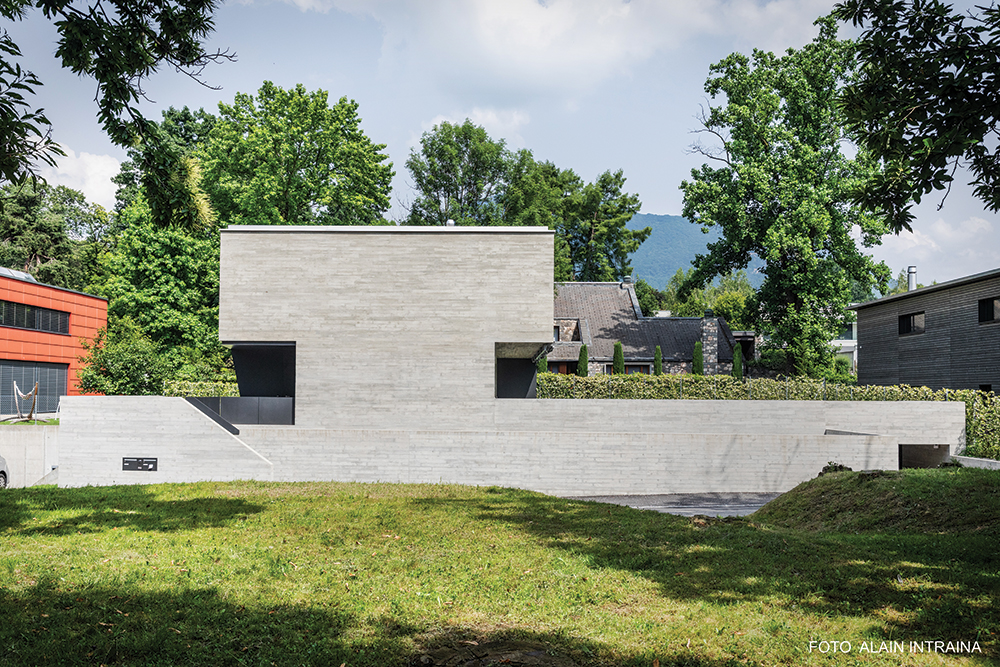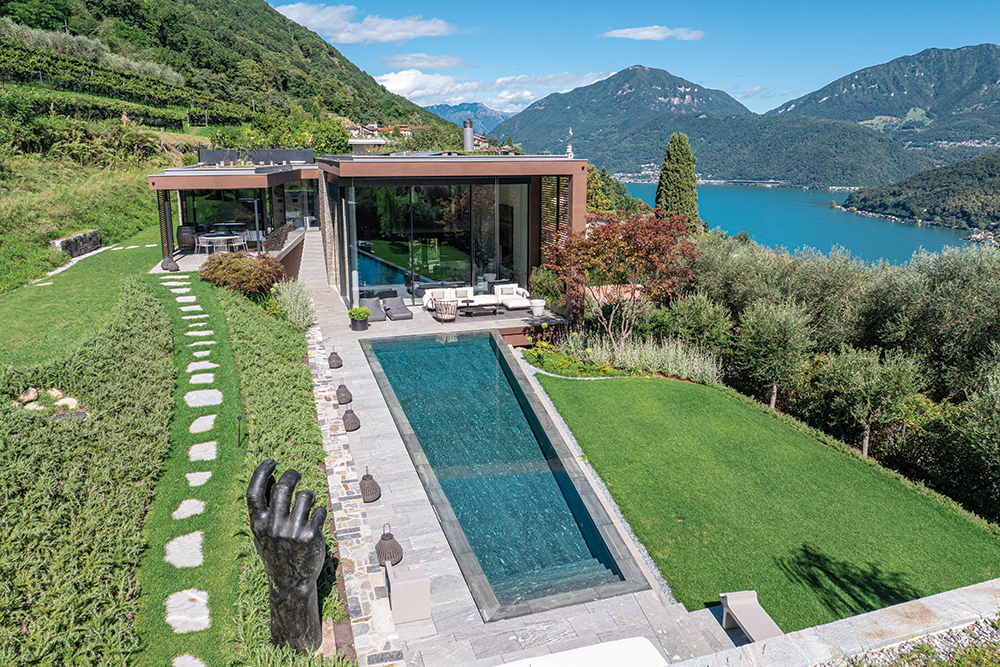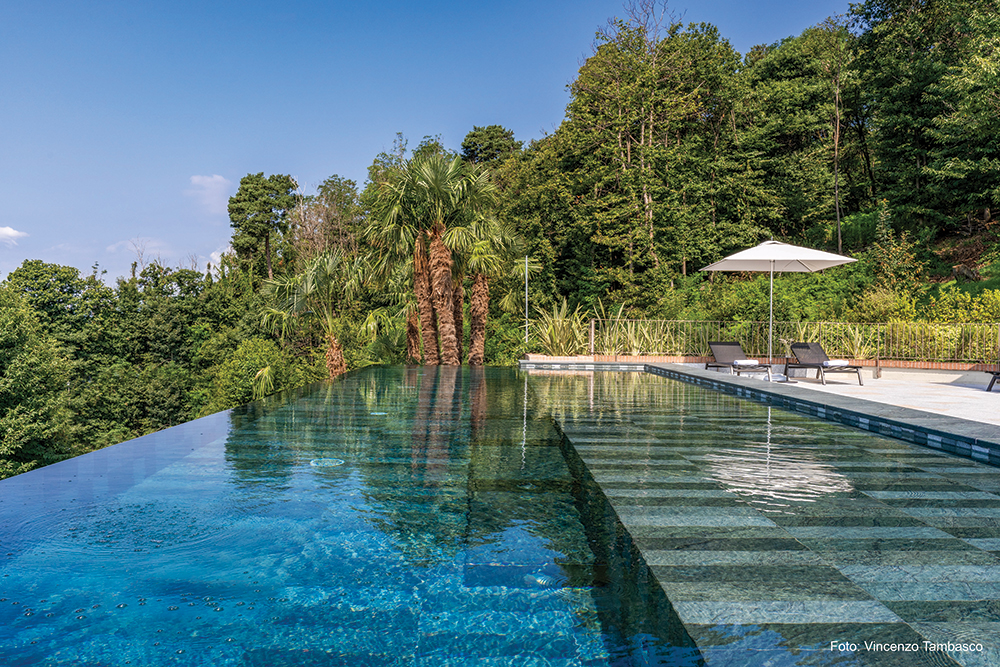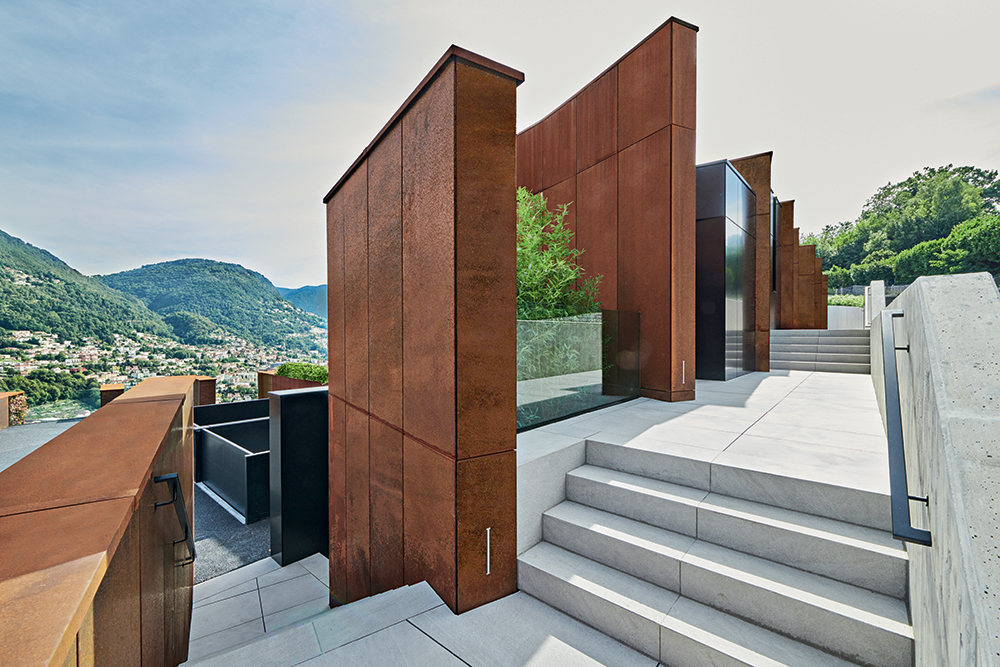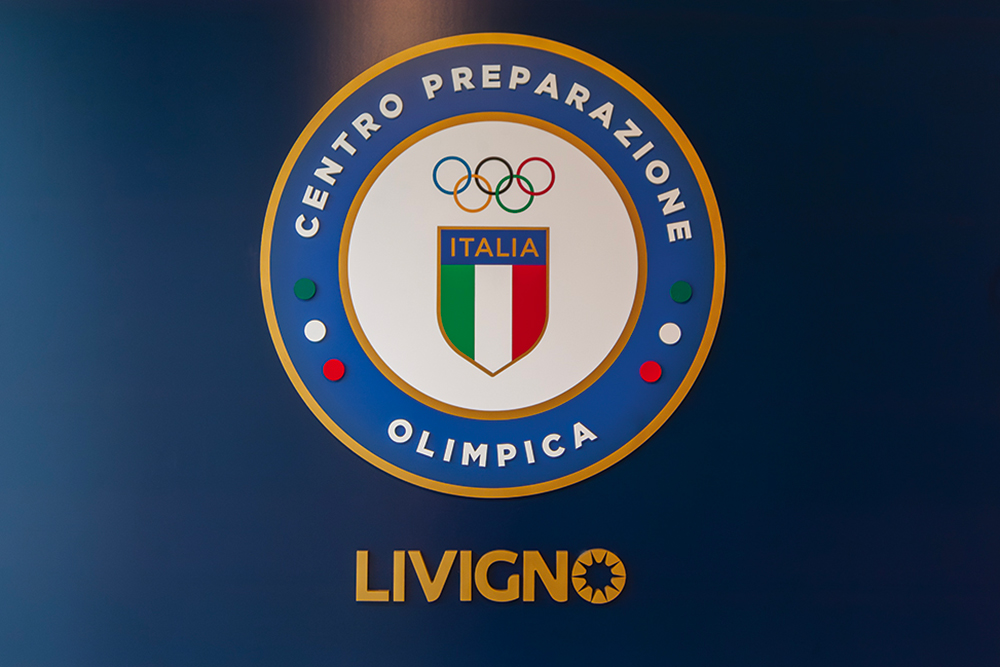Waterproofing of surfaces with Drycoat architectural coating, which adheres like a second skin to the design of the pool and threshold along the entire façade.
The iconic villa designed by architect Mauro Galfetti stands out first and foremost for its perfect brutalist profile. Underneath the entire property is a waterproofed basement level with a complete Drytech Tank – floor, elevations and slab – which houses the underground floor of the first apartment, lit by a large patio parallel to the street, as well as the garage and technical rooms.
The Drytech waterproof concrete slab is the base of the garden.
The waterproof structure of the swimming pools is also a Drytech White Tank, whose above-ground surfaces have been coated with the continuous, waterproof Drycoat membrane which, with its 3 millimetres thickness, adapts like a second skin to the architectural lines.
In fact, it was also used to seamlessly waterproof the entire porch threshold and French window frames.
The granite flooring of the porch and the edge of the swimming pools was laid directly on the Drycoat membrane.
Project: Mauro Galfetti, Viganello
Structure: Casanova Ingegneria, Pazzallo
Construction: Impresa Taddei, Viganello
